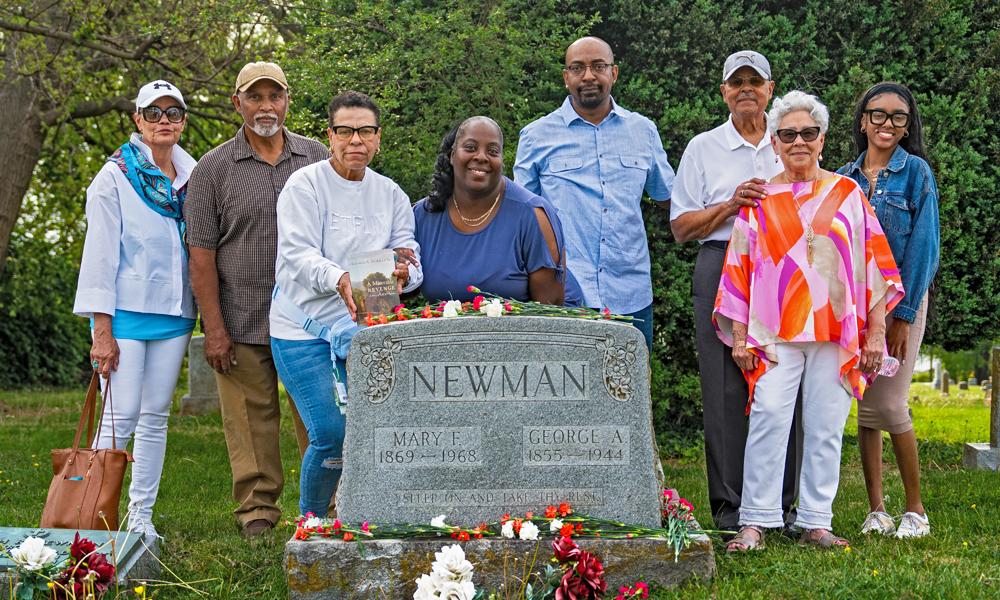A legacy lives on: Celebrating George A. Newman’s publication after 150 years
Featured Stories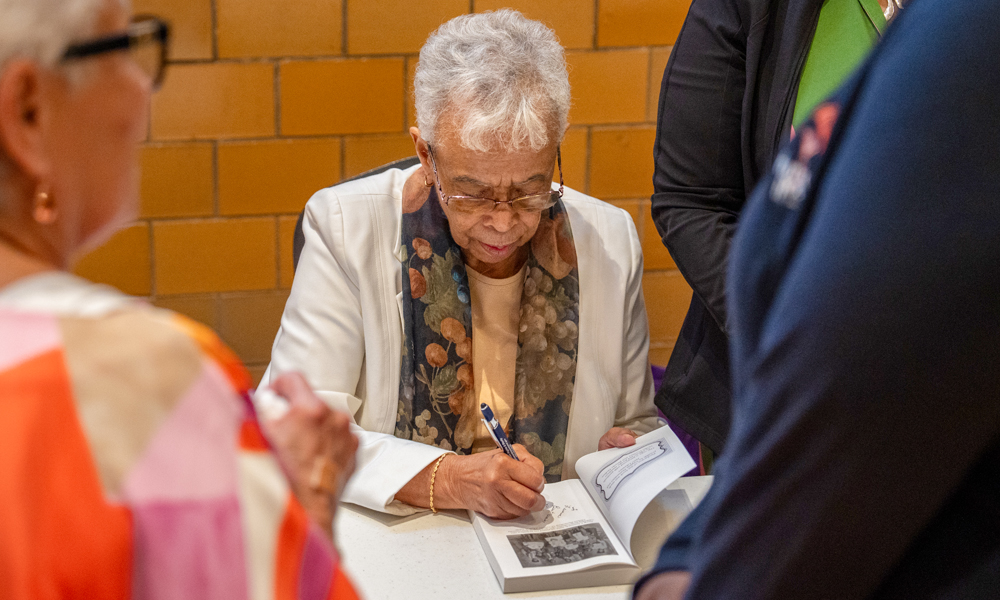
SUMMARY: Written in the mid-1800s, Rev. George A. Newman Sr.'s manuscript, "A Miserable Revenge: A Story of Life in Virginia," has finally been published as a novel with the help of his family and JMU.
The Rev. George Ambrose Newman Sr. was born to free Black parents on Feb. 4, 1855, in Winchester, Virginia. A community leader and longtime educator, he wrote a novel between 1876 and 1877 that was never published but has been preserved through generations of his family. Now, for the first time, the published manuscript is being shared with the public through a collaboration with Newman’s family, the Harrisonburg community, and James Madison University.
On May 1, the four-hour Newman Symposium celebrated the 150th anniversary of Newman’s arrival in Harrisonburg by hosting speeches, tours of historical landmarks, and the release of Newman’s published book, A Miserable Revenge: A Story of Life in Virginia.
“We hope [the novel] will bring more attention to Newman and to a novel that deserves a significant place in the history of African American literature and Virginia literature,” said Dr. Brooks Hefner, professor of English at JMU and co-editor of Newman’s book.
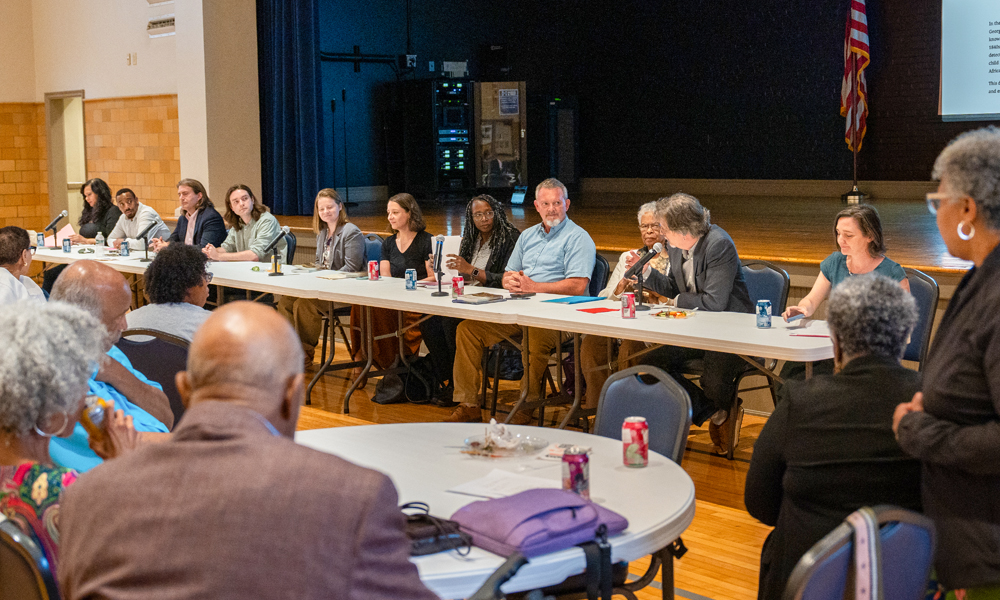
Celebrating an icon
In 1875, Newman moved to Harrisonburg to serve as principal of the Lucy F. Simms School for local Black students. In addition to being a dedicated educator, he was a writer, musician, minister, and a member of the Mount Zion African American Masonic Lodge in Staunton, Virginia. He held positions as an Internal Revenue Service agent and a deputy U.S. marshal.
Known as a trailblazer for the African American community in Harrisonburg, he paid poll taxes for local Black men in response to disenfranchisement tactics used during Segregation and provided financial assistance and legal advice.
Honoring Newman’s legacy, the symposium was held at the Lucy F. Simms Continuing Education Center and drew a diverse group of attendees, including students, local contributors, educators, and members of Newman’s extended family.
|
“Our work on the Newman novel is a reminder that there is so much out there that can enrich our understanding of local history." — Dr. Brooks Hefner, professor of English and co-editor of the book |
Attendees toured significant local landmarks, including the Dallard-Newman House, where Newman lived when he arrived in Harrisonburg, and the Lucy F. Simms School, where Newman taught for 33 years.
A slideshow presentation offered a visual journey through Newman's life, displaying family photographs, historical documents, and moments from his legacy. The event provided a rich reflection of Newman’s lasting impact on the community.
Collaborating to fund the event were JMU Libraries; the College of Arts and Letters; College of Education; Department of English; African, African American and Diaspora Studies Center; and CAL Legacy Alumni Board.
An anticipated manuscript
The centerpiece of the celebration was the long-awaited publication of Newman’s novel, which takes place in Winchester in the 1840s. It represents the earliest known example of an African American novel as well as “white-life” literature.
In her book, The Souls of White Folk: African American Writers Theorize Whiteness, Dr. Veronica Watson, chair of the English department at Old Dominion University, defines “white-life” literature as stories in which a Black author writes fictional text that revolves around primarily white characters and explores the meaning of “whiteness.”
Co-editing the book alongside Hefner was JMU English professor and Director of Graduate Studies Dr. Mollie Godfrey.
Said Godfrey, “Newman’s narrative is not only a testament of the importance of Black writing during this time, but a reminder that many Black literary voices were made unheard, buried in archives or preserved in private family collections.”
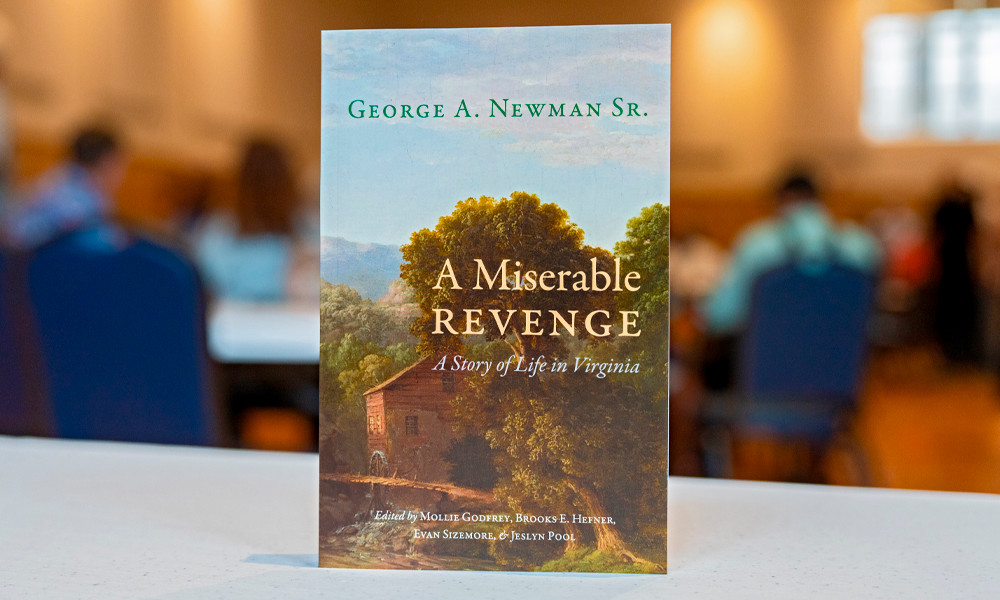
Crucial in safeguarding the 480-page hand-written manuscript for decades was Newman’s granddaughter, Ruth Toliver, a retired educator and local historian who received the pages from her aunt.
“I was so glad to get that novel in my hands, so I kept it in an acid-free box for years,” Toliver shared at the event. “Then I noticed one of the pages was torn. The pages were yellow, and I thought, I’ve got to do something with this.” So, she contacted JMU Libraries’ Special Collections and asked them to preserve the pages for future use.
“I had no idea this novel would spark as much interest as it did,” Toliver added. Eventually, her decision to preserve and share the manuscript helped bring her grandfather’s writing to light, ensuring his voice would finally be heard.
Helping co-edit the book were former graduate students Jeslyn Pool (’23M) and Evan Sizemore (’23M). Additional contributors included Head of Special Collections Kate Morris (’05), assistant professor of education Leonard Richards (’13, ’14M), and art professor Susan Zurbrigg.
"[T]his is a very powerful local story about this community that students can learn about, but also a part of African American history that indeed is part of American history,” Richards said during a panel discussion. Newman’s book illustrates “the powerful stories that students can connect with and can see themselves in the curriculum, and understand their community deeply.”
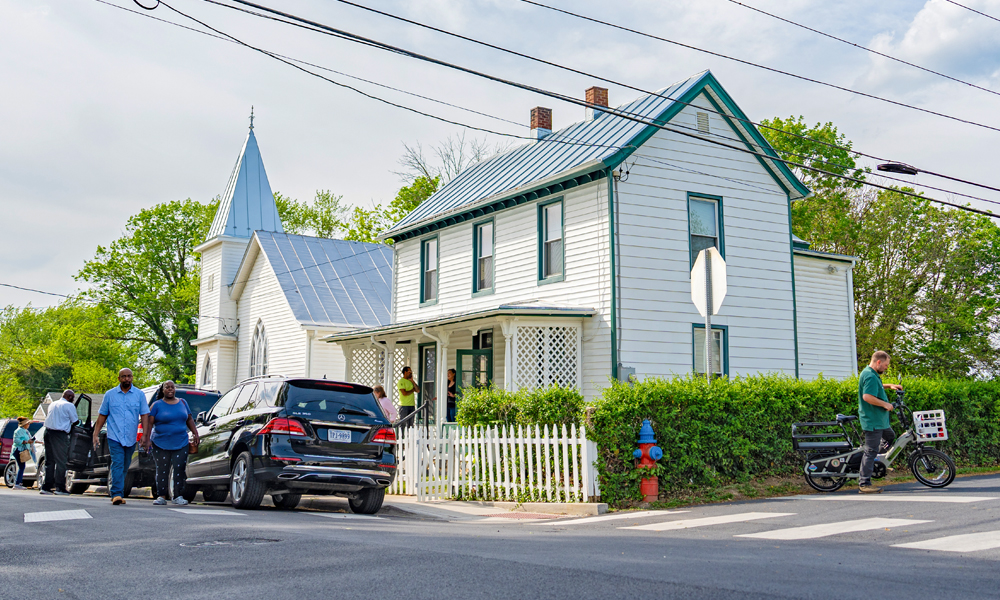
A legacy lives on
“Up until very recently, historically white institutions in the area showed little interest in preserving Black archives,” Godfrey said, “and local Black residents had little reason to trust these institutions to be good caretakers of their private collections.”
Emphasizing the broader cultural and educational goals behind their work, Hefner pointed to the Toliver family’s donation of the Ruth and Lowell Toliver Collection of Newman Family Papers to Special Collections as an example of the progress being made. The donation demonstrates the promise of long-term trust building and community-university partnerships, Godfrey and Hefner wrote in the introduction of the book.
Reiterating the project’s lasting impact, Hefner said, “Our work on the Newman novel is a reminder that there is so much out there that can enrich our understanding of local history.”
The celebration was just the beginning — an invitation to continue exploring the untold narratives that can help us shape the future.
As part of its outreach efforts, JMU is ensuring the novel reaches a wider community.
“We are donating books to local schools and cultural institutions,” Hefner said, “in the hope that the public will be able to acknowledge Newman’s legacy and the richness of Black life in Harrisonburg and the Shenandoah Valley in the 19th century.”
